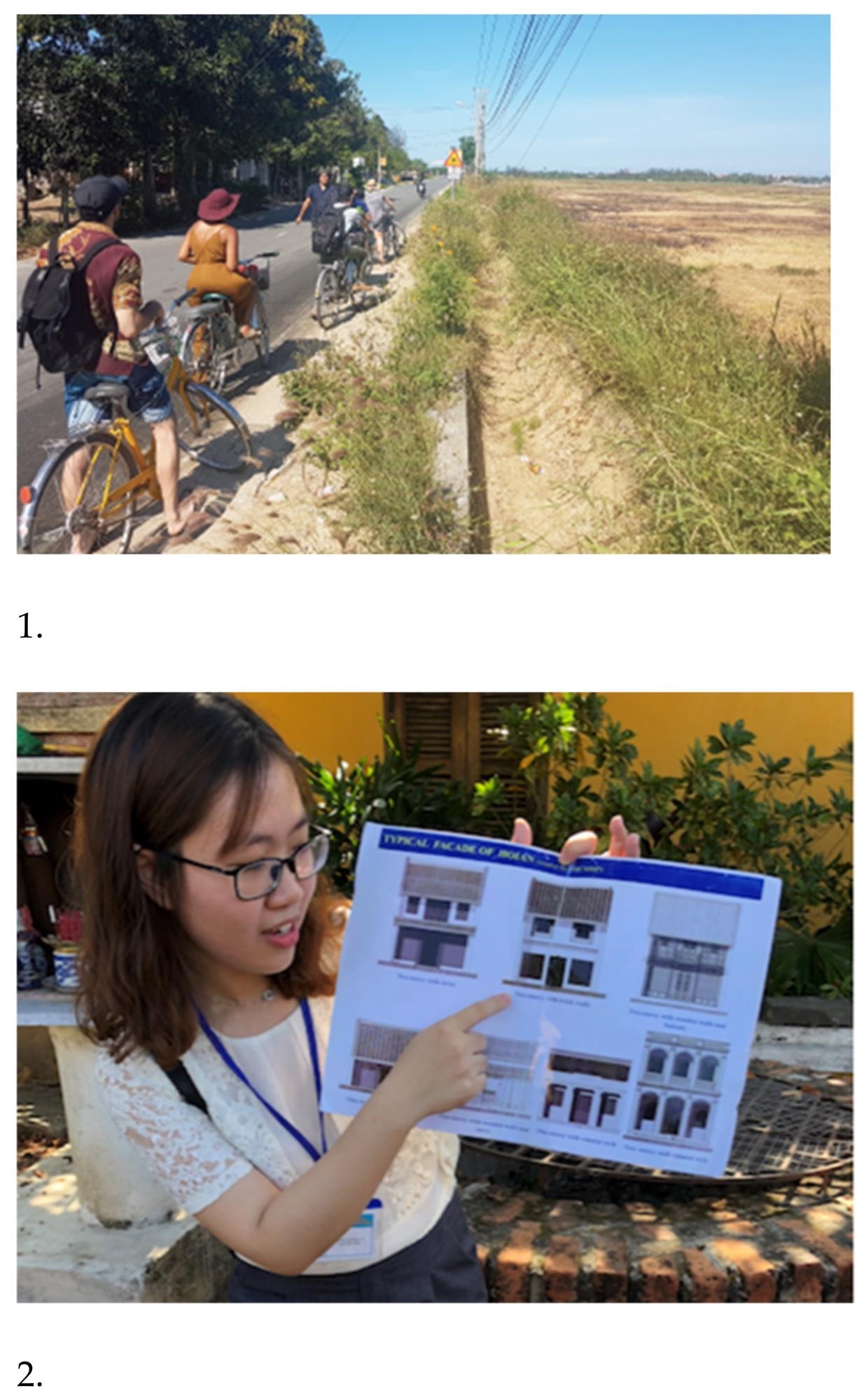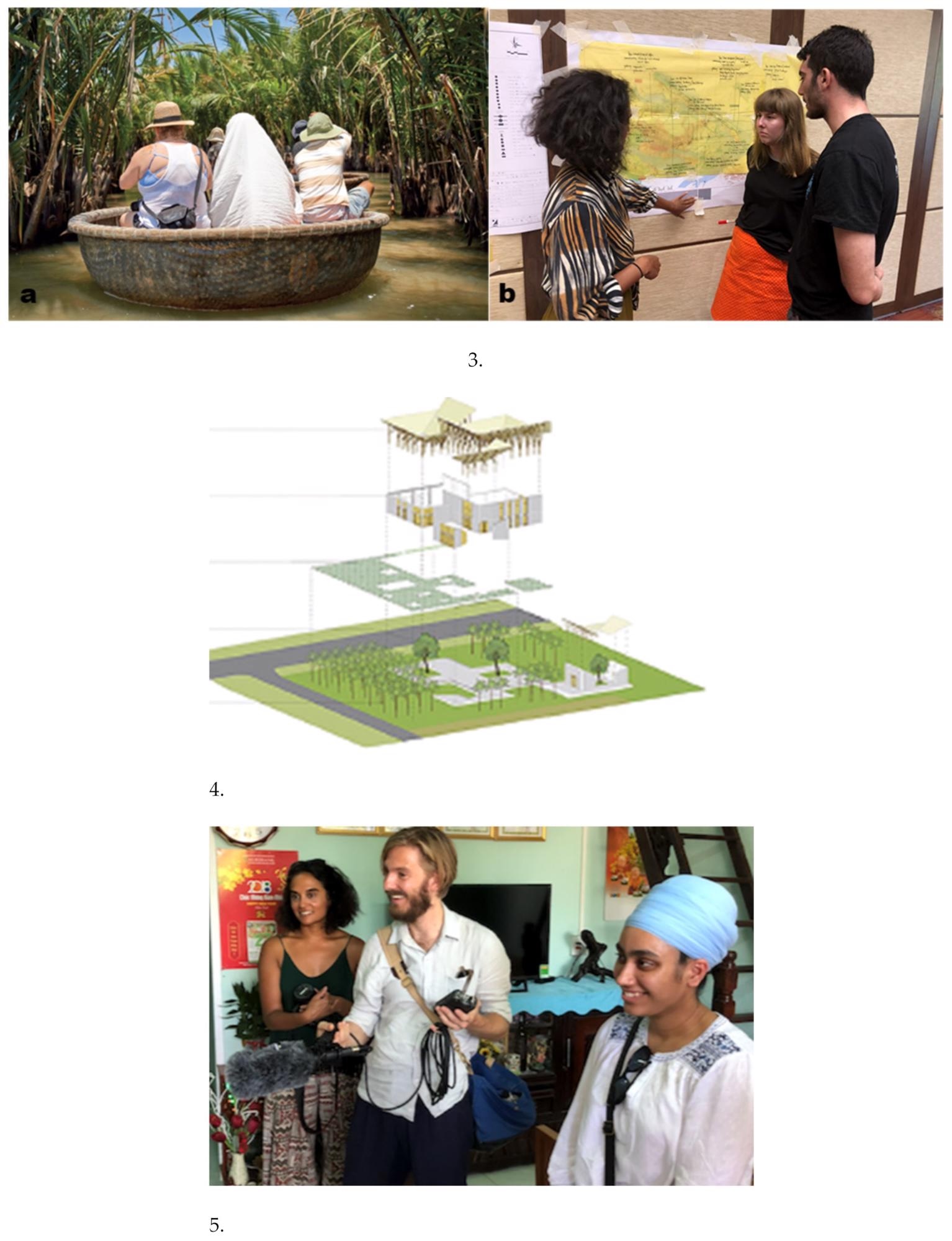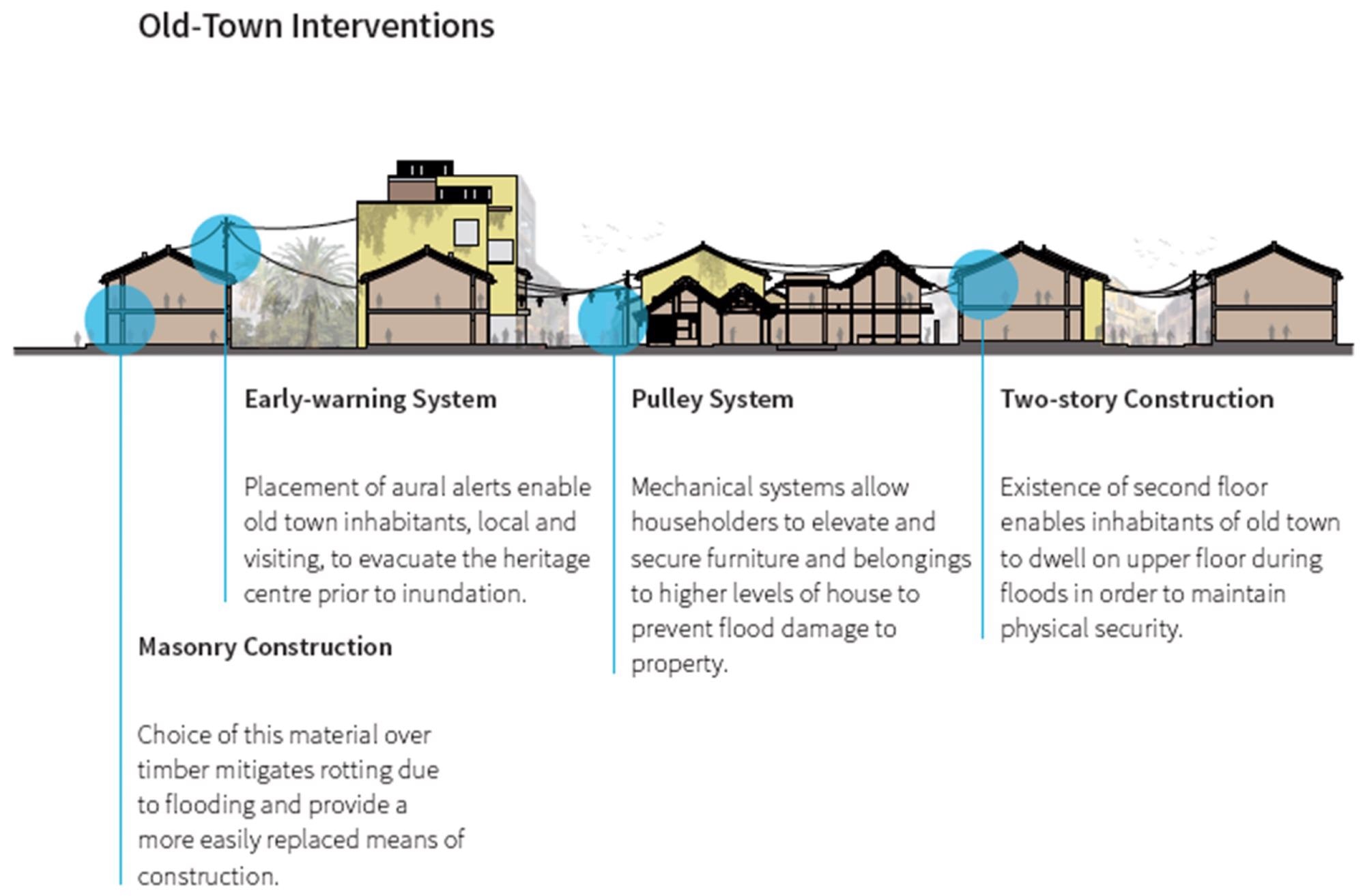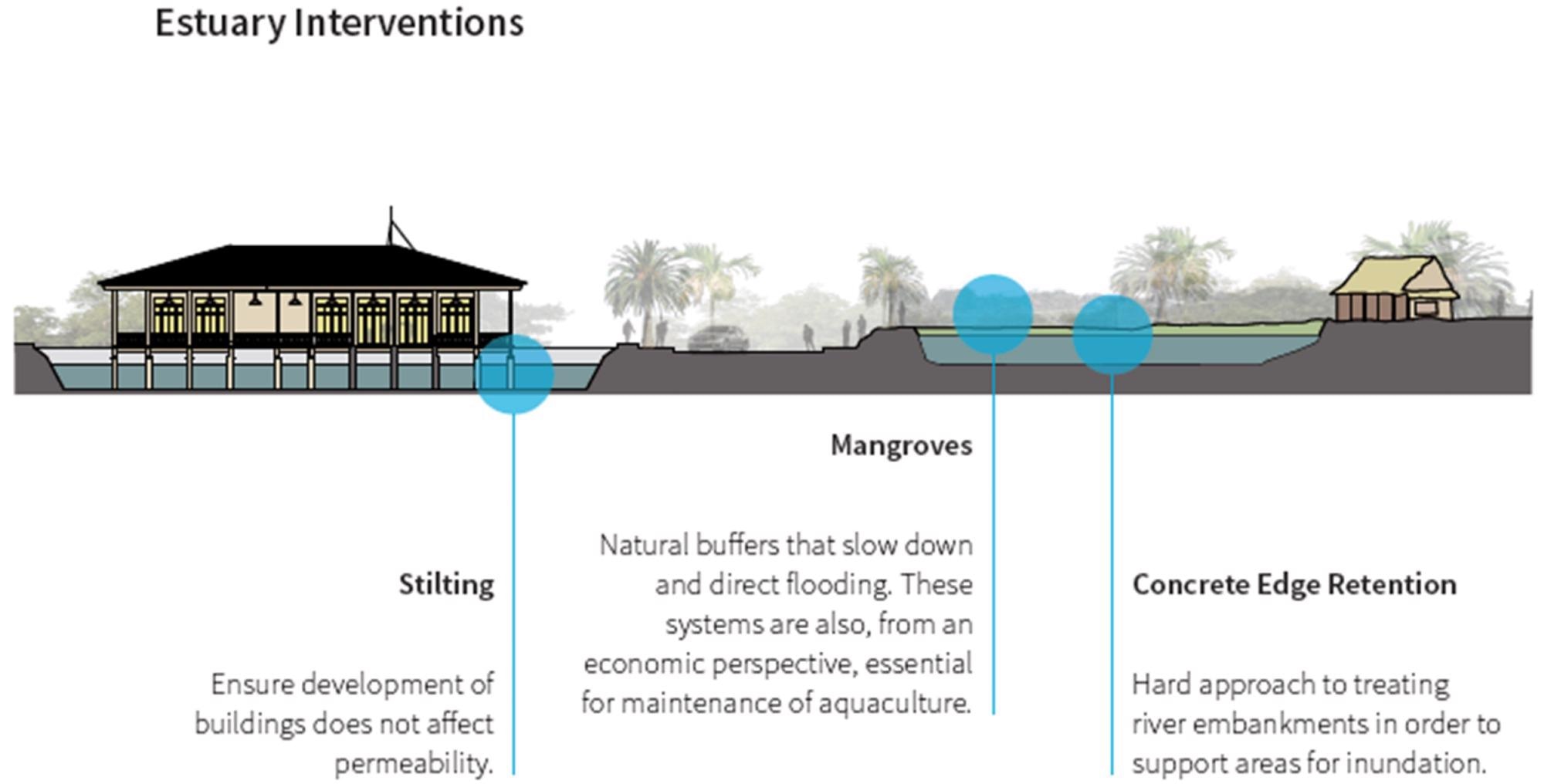A study in the journal Buildings looks at how design discourses and practices can be used to both alleviate the negative effects of (un-)natural disasters and lead to good post-disaster regeneration.

Study: Design and Disaster Resilience: Toward a Role for Design in Disaster Mitigation and Recovery. Image Credit: oatawa/Shutterstock.com
The world is facing a rising number of catastrophes, from yearly cyclones in the tropics and subtropics to earthquakes, floods, excessive heat, and wildfires which have caused serious damage at a cost of over USD 5200 billion since 1980, and USD 150 billion in 2019.
In the last two decades, the intensity of disasters has increased the number of people dislocated. Worldwide, 24.9 million people were displaced by the 1900 disasters registered in 2019.
This is the biggest number of displacements since 2012. If global warming is not addressed, flooding alone is expected to result in 50 million displaced people each year by 2100.
Researchers are constantly highlighting whole-system risks associated with the built environment’s construction, such as dangerous settlement patterns and improper building design in disaster-prone locations, as important drivers of vulnerabilities that must be addressed.
While many of these housing and infrastructure issues are inextricably linked to design issues, the design also offers an innovative window into the complexities of disaster risk reduction and recovery, as well as a conceptual bridge to new ways of building socioeconomic and physical resilience in disaster-affected communities.
Design thinking eliminates linear thinking in the constantly complex and unpredictable world of disaster-risk management, instead focusing on two iterative processes: (i) recognizing and defining problems by comprehending systemic relationships, and (ii) generating and testing possible solutions.
The first is an integrative sequence in which the designer examines all of the sociological, cultural, ecological, governmental, and economic aspects as well as their relationships within connected systems. This is a crucial task because a poorly defined problem will not yield a long-term solution. The second entails a series of steps that include researching, identifying, and evaluating numerous different techniques to determine the best feasible solutions to the problem.
This research focuses on two questions to solve this significant knowledge and practice gap:
- What can be gained from catastrophe mitigation and recovery examples based on design?
- What are the best ways to build the skills required to integrate design into disaster risk management?
Discussion
Design, in the context of the built environment, refers to a problem-solving approach that incorporates a cross-disciplinary systems approach, spatial innovation, and creativity.
Iterative sequences of observation to comprehend and sympathize with people’s requirements through their cooperation and engagement, quick prototyping and testing of alternative socio-spatial designs, design creation, and full project implementation and evaluation are all part of the design process.
Architects and other built-environment and landscape designers have these skills as well.
The creation and reshaping of two- and three-dimensional space is an ongoing, evolving procedure based on an awareness of the interconnection between human ambitions, the natural environment, and the social, political, and cultural systems in which the designs are built. As a result, design is “both a mindset and a methodology.”
From conversations with 15 architects working in disaster mitigation and recovery, as well as an analysis of the design principles behind exemplar creative projects after catastrophic events in Australia, Bangladesh, Haiti, Sri Lanka, the United States, and Vietnam, the broad fundamentals and techniques for resilient design were investigated.
This research also revealed numerous core themes about disaster resilience design that go beyond the practical realities of architecture. Evans (2015) identified five of these:
- Architects have practical mind sets and skill-sets that are valuable in disaster mitigation and recoveries, such as an interdisciplinary knowledge of science, engineering, technology, and materials, a spatial opinion on systems and patterns, inventive problem-solving, and planning, organizing, planning, and managing economic, social, crisis, constitutional, and governmental constraints, as well as working with them.
- Good spatial awareness, aesthetic, and design talents, as well as the architect's capacity to create beauty—even in the most improbable settings—add actual value to mentally troubled and demoralized people and communities.
- The impoverished, disadvantaged, and disturbed deserve the decorative and practical benefits of good architecture as much as, if not more than, the affluent few who can afford commercial design approaches.
- There are no global, one-stop solutions in resilient design.
- The area of disaster-resilient design has been underserved by design education.
A case report of an international design studio built in Vietnam, which was discussed at the European network’s 2019 conference, exemplifies several of these challenges.
The studio was held at RMIT University as part of a semester-long program named “Climate Change, Design and Development,” which is a module of a Master of Disaster, Design, and Development degree (MoDDD).
The degree offers an early- to mid-career qualification for individuals who want to move into the disaster-management industry, and it is taught in a blended learning approach to accommodate this.
The course was divided into two sections. Part 1 used a combination of online materials, webinars, and workshop assignments to examine fundamental ideas and trends in climate change as well as adaptation options. The second part of the project was a design study for adaptation solutions for the historic town of Hội An and its environs. The research drew on the online studies from Part 1 and included the activities listed in Table 1.
Table 1. The sequence of learning activities and associated learning principles in the case study of learning to design for disaster resilience. Source: Charlesworth & Fien, 2022
| Phases in the Study |
Learning Activities |
Pedagogical Principles |
| 1. Site familiarization |
- An annotated mapping and photographic exercise focusing on the biophysical landscape, the centrality of the river and flood plain to economic activities, and architecture and culture heritage
- Statistical analysis of demographic and economic change in Hôi An and surrounds
|
- Field immersion
- Intercultural communication
- Stakeholder meetings
- Systems analysis
- Focus on socio-ecological relationships and drivers of change
|
| 2.Consultations and workshops with key local experts and stakeholders |
- Climate-change science and impacts in Vietnam
- Flood-risk scenarios for Hôi An region
- Resilience Index research in Vietnam and Hôi An
- World Heritage values in Hôi An and climate-change threats to, and impacts on, heritage values
|
- Stakeholder meetings
- Respect for scientific, social-science, and cultural knowledge and evidence
- Synthesis of knowledge forms
- Identifying design implications
|
| 3.Field investigations and data analysis |
- Situational Analysis
- Coastal and wetland vulnerability analysis
- Typhoon-resistant housing
- Gender issues in climate-change adaptation
|
- Vulnerability analysis and mapping
- Recognition of traditional knowledges and flood adaptations
- Design and precedent analysis
- Gender sensitivity and design
- Stakeholder consultation
|
| 4.Design and planning |
- Flood- and typhoon-resistant house designs
- Landscape adaptations to flooding and coastal erosion
- Design of an Adaptation Pathways Plan
|
- Linking systems thinking and design thinking through systemic design processes
- Development of design provocations
- Stakeholder consultation and revision
- Adaptation Pathways Planning
|
| 5. Presentation and reporting |
- Presentation preparation
- Presentation to key stakeholders encountered in various activities
- Report writing
|
- Oral and written communication
- Stakeholder consultation
- Report writing and design
- Podcast production
|
Figure 1 is a collection of images that demonstrate this method.


Figure 1. Images of the learning activities in the Hội An case study. 1. Site familiarization: Group cycle trip to identify infrastructure vulnerabilities along the road from Hội An to the coast. 2. Workshop by local experts: Heritage in Hội An. 3. ((a) left) Field investigation: The use of wetlands to protect against storm surges during typhoons. ((b) right) Data Analysis: Vulnerability map-ping. 4. Design: Planned green spaces around the city aim to slow down urbanization and limit further increases in building density, making way for more water runoff. 5. Reporting: Interviewing householder for a podcast. Image Credit: Charlesworth & Fien, 2022
A few of the design-based recommendations produced for these two precincts are depicted in Figure 2. They demonstrate how the conclusions from Phases 1–3’s systems analysis were put to use.


Figure 2. Recommended designs for climate change adaptation in two precincts of Hội An. Image Credit: Charlesworth & Fien, 2022
Conclusion
This study has clarified how design can be used as a logistical tool to provide interdisciplinary and novel solutions for (un-)natural catastrophes, sea-level rises, and human displacement.
With disasters displacing record numbers of people around the world, it is critical to understand how traditionally underutilized disciplines like architecture may help improve disaster resilience. The following are some major takeaways from the paper:
- International, government, and community organizations are battling to put in place effective catastrophe risk reduction and long-term recovery programs.
- The community-led procedures required for long-term healing and the product-delivery culture that defines many shelter and settlement programs have a practice–theory divide.
- Besides their proven ability to work with societies and create spatial reactions to instruct both disaster-risk reduction and long-term rebuilding after a disaster, experienced system and design thinkers (such as architects, urban planners, and landscape architects) are rarely hired in the disaster-risk-management sector.
- While most design degrees are innately conservative when it comes to dealing with key social obstacles and catastrophes, specialized masters degrees that incorporate disaster-resilient design are getting popular and are training the next generation of disaster, humanitarian, and development practitioners.
- The paper outlines design contributions as a disciplinary and operational instrument for dealing with many of the current social, environmental, and economic challenges. Therefore, design education needs to be reoriented to include key disaster-risk-management ideas including susceptibility, urban resilience, adaptation to climate change, risk-based architecture, and scenario and community planning, among others.
Journal Reference:
Charlesworth, E., & Fien, J. (2022) Design and Disaster Resilience: Toward a Role for Design in Disaster Mitigation and Recovery. Architecture, 2(2), 292-306. Available Online: https://www.mdpi.com/2673-8945/2/2/17/htm
References and Further Reading
- Munich, R (2020) Relevant Natural Catastrophe Loss Events Worldwide 2019 (2020). Available at: https://www.munichre.com/en/company/media-relations/media-information-and-corporate-news/media-information/2020/causing-billions-in-losses-dominate-nat-cat-picture-2019.html
- Global Report on Internal Displacement 2020 (2020). In: IDMC (Internal Disaster Monitoring Centre) IDMC; Available at: https://www.internal-displacement.org/global-report/grid2020/.
- Assessing the Impacts of Climate Change on Flood Displacement Risk (2020) In: IDMC (Internal Disaster Monitoring Centre). Available at: https://www.internal-displacement.org/publications/assessing-the-impacts-of-climate-change-on-flood-displacement-risk
- Cadman, E (2020)Insurance Industry Calls for Action to Mitigate Climate Risk as Australia Bushfires Widen; Bloomberg News: New York, NY, USA; Available at: https://www.bloomberg.com/news/articles/2020-01-08/deadly-australia-fires-spur-calls-to-mitigate-disaster-risk.
- Bojic, D., et al. (2000) Governance challenges for disaster risk reduction and climate change adaptation convergence in agriculture - Guidance for analysis. In: Food and Agriculture Organization of the United States, Rome, Italy. Available at: https://www.fao.org/documents/card/en/c/ca5389en/.
- Geis, D (2000) By design: The disaster resistant and quality-of-life community. Natural Hazards Review, 1(3), pp. 150–160. doi.org/10.1061/(ASCE)1527-6988(2000)1:3(151).
- Aldunce, P., et al. (2014) Framing disaster resilience. The implications of the diverse conceptualisations of “bouncing back”. Disaster Prevention and Management, 23(3), pp. 252–270. doi.org/10.1108/DPM-07-2013-0130.
- Alexander, D E (2013) Resilience and disaster risk reduction: An etymological journey. Natural Hazards and Earth System Sciences, 13(11), pp. 2707–2716. doi.org/10.5194/nhess-13-2707-2013.
- Fisher, T (2013) Designing to Avoid Disaster: The Nature of Fractal-Critical Design; In: Routledge: New York, NY, USA. doi.org/10.4324/9780203113295.
- Gonzalez-Mathiesen, C & March, A (2018) Establishing Design Principles for Wildfire Resilient Urban Planning. Planning Practice & Research, 33(2), pp. 97–119. doi.org/10.1080/02697459.2018.1429787.
- Smith, T & Choy, D L (2015) Adapting Australian coastal regions to climate change: A case study of South East Queensland. In: Climate Change and the Coast: Building Resilient Communities; Glavovic, B., Kelly, M., Kay, R., Travers, A., Eds.; CRC Press: Boca Raton, FL, USA.
- Charlesworth, E & Ahmed, I (2015) Sustainable Housing Reconstruction: Designing Resilient Housing after Natural Disasters. In: Routledge: London, UK.
- Keenan, J (2018) Seeking an interoperability of disaster resilience and transformative adaptation in humanitarian design. International Journal of Disaster Resilience in the Built Environment, 9(2), pp. 145–152. doi.org/10.1108/IJDRBE-04-2017-0034.
- Lee, A (2020) Design by Resilience; Springer: Dordrecht, The Netherlands.
- Buchanan, R (1992) Wicked problems in design thinking. Design Issues, 8(2), pp. 5–21. doi.org/10.2307/1511637.
- Johnson, T (2016) ‘Design Thinking’ Is Changing the Way We Approach Problems. In: University Affairs. Available at: http://www.universityaffairs.ca/features/feature-article/design-thinking-changing-way-approach-problems (Accessed 12 February 2022).
- Charlesworth, E (2014) Humanitarian Architecture: 15 Stories of Architects Working after Disasters. In: Routledge: London, UK.
- Elliot-Ortega, J (2010) Urban Design as Problem Solving: Design Thinking in the Rebuild by Design Resiliency Competition. Master’s Thesis, University of Chicago, Chicago, IL, USA. Available online: https://dspace.mit.edu/handle/1721.1/98931 (Accessed 26 July 2020).
- Shaw, R., et al. (2016) (Eds.) Urban Disasters and Resilience in Asia. In: Butterworth-Heinemann/Elsevier: Oxford, UK.
- Professional Practice (2020) Resilient Design; American Society of Landscape Architects, Washington, DC, USA. Available at: https://www.asla.org/resilientdesign.aspx (Accessed 9 August 2020).
- Sanderson, D., et al. (2016) (Eds.) Urban Disaster Resilience. In: Routledge: New York, NY, USA.
- Alexander, D (2016) The game changes: ‘Disaster Prevention and Management’ after a quarter of a century. Disaster Prevention and Management, 25(1), pp. 261–274. doi.org/10.1108/DPM-11-2015-0262.
- Boer, L., et al. (2013) Challenging industry conceptions with provotypes. CoDesign, 9(2), pp. 73–89. doi.org/10.1080/15710882.2013.788193
- Vandenbroeck, P (2012) Working with Wicked Problem. In: King Baudouin Foundation: Brussels, Belgium. Available at: https://www.kbs-frb.be/en (Accessed 5 July 2015).
- Davis, I (1978) Shelter after Disaster, 2nd ed. In: Oxford Polytechnic Press: Oxford, UK. Available at: https://www.worldcat.org/title/shelter-after-disaster/oclc/4331905 (Accessed 18 November 2018).
- Daly, P & Feener, R (2016) (Eds.) Rebuilding Asia Following Natural Disasters: Approaches to Reconstruction in the Asia-Pacific Region. In: Cambridge University Press: Cambridge, UK.
- UNHCR(2020) Global Trends: Forced Displacement in 2019. UNHCR: Geneva, Switzerland. Available at: https://www.unhcr.org/globaltrends2019/.
- Wilson, A (2014) Resilience as Means of Mitigating Climate Change 2014. In: Resilient Design Institute. Available at: https://www.resilientdesign.org/resilience-as-means-of-mitigating-climate-change/ (Accessed 17 August 2020).
- Resilient Design Institute (nd) (2020) What Is Resilience? In: Resilient Design Institute. Available online: https://www.resilientdesign.org/resilient-design/ (Accessed 20 July 2020).
- Evans, G (2014) Humanitarian Architecture. In: Australian Institute of Architects, Victorian Chapter: Melbourne, Australia, 12 August 2014; Available at: https://www.gevans.org/speeches/speech549.html (Accessed 29 July 2020).
- Adendroth, L & Bell, B (2019)Public Interest Design Education Guidebook. In: Curricula, Strategies, and SEED Academic Case Studies; Routledge: New York, NY, USA..
- Zuckerman Jacobson, H & Ban, S (2014)Shigeru Ban: Humanitarian Architecture. In: Routledge, Distributed Art Publishers: New York, NY, USA. Available at: https://www.taylorfrancis.com/chapters/edit/10.4324/9781315776545-3/shigeru-ban-shigeru-ban
- Awan, N., et al. (2011) Spatial Agency: Other Ways of Doing Architecture. In: Routledge: London, UK.
- Till, J (2020) Architecture after Architecture. In: Routledge: London, UK, 2020; Available online: http://www.jeremytill.net/read/130/architecture-after-architecture
- Bristol, G (2014) The last architect. In: Silpakorn Architectural Discourse 3rd Mini-Symposium, Bangkok, Thailand, 18–19 March 2004; Available at: https://www.academia.edu/7732516/The_Last_Architect (Accessed on 9 July 2018).
- Griffiths, R (2004) Knowledge production and the research-teaching nexus: The case of the built environment disciplines. Studies in Higher Education, 29(6), pp. 709–726. doi.org/10.1080/0307507042000287212.
- Lloyd-Jones, T (2006) Mind the Gap! Post-Disaster Reconstruction and the Transition from Humanitarian Relief. Royal Institution of Chartered Surveyors: London, UK, 2006; Available at: https://www.preventionweb.net/publications/view/9080 (Accessed 24 July 2020).
- Lloyd-Jones, T., et al. (2009) The Built Professions in Disaster Risk Reduction and Response: A Guide for Humanitarian Agencies. In: MLC Press, University of Westminster: London, UK. Available at: https://www.ifrc.org/ (Accessed 24 July 2020).
- Owen, D & Dumashie, D (2007) Built Environment Professional’s Contribution to Major Disaster Management. In: FIG Working Week, Hong Kong, China, 13–17 May 2007. Available at: https://www.fig.net/resources/proceedings/fig_proceedings/fig2007/papers/ts_1h/ts01h_03_owen_dumashie_1531.pdf (Accessed 17 July 2020).
- Cage, C., et al. (2009) Building relevance: Post-disaster shelter and the role of the building professional. In: Background Paper for Conference of the Centre for Development and Emergency Practice (CENDEP); Oxford Brookes University: Oxford, UK, 18 September 2009.
- Wang, T (2010) A new paradigm for design studio education. The International of Journal of Art & Design Education, 29(2), pp. 173–183. doi.org/10.1111/j.1476-8070.2010.01647.x.
- Thurairajah, N., et al. (2011) Incorporating disaster management perspective into built environment undergraduate curriculum. In: International Conference on Building Resilience, Kandalama, Sri Lanka, 20–22 July 2011; Available at: https://www.researchgate.net/publication/333131988(Accessed 31 July 2020).
- Acar, E & Yalçınkaya, F (2016) Integrating disaster management perspective into architectural design education at undergraduate level—A case example from Turkey. In: The 5th World Construction Symposium 2016, Colombo, Sri Lanka, 29–31 July 2016; pp. 284–293. Available at: https://www.researchgate.net/publication/303988576 (Accessed 28 March 2020).
- Till, J (2018) Foreword. In: The Routledge Companion to Architecture and Social Engagement; Karim, F., Ed.; Routledge: London, UK, 2018; Volume xxvi–xxviii.